Tangerines are popular among citrus growers because they look attractive all year round. This evergreen plant, with proper care, blooms and bears fruit even indoors.
Leaf drop in citrus plants is a clear sign of improper care, disease, pest infestation, or stress. A healthy tree does not shed its leaves. Why is your indoor tangerine losing leaves, and how can you save it? Read on to find out.
Table of contents
Reasons for Leaf Drop in Indoor Tangerines
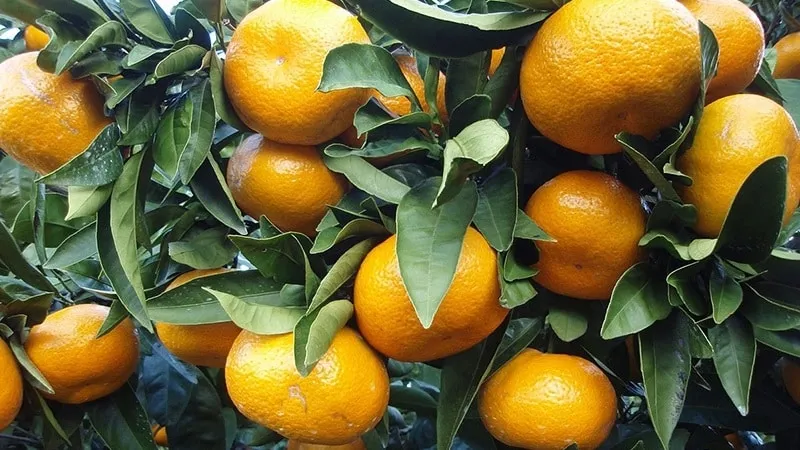
Leaf shedding in tangerines is rare. If a few leaves fall but the crown remains dense, there’s no need to worry. Each leaf has a lifespan of about three years. After that, they drop, and new foliage grows in their place.
Minor leaf drop may occur in autumn, usually in November, but this won’t thin out the crown. This phenomenon is linked to the plant’s natural life cycle.
If leaves fall in large numbers, inspect the plant for infections or pests, and adjust your care routine. Such a problem indicates cultivation errors.
Note: Tangerines are evergreen plants. Significant leaf drop should not occur, even in winter.
Unsuitable Growing Conditions
Indoor citrus plants are sensitive to their environment. In uncomfortable conditions, they start shedding leaves and turning yellow. The following factors often cause this issue.

Low or High Temperatures
Tangerines thrive at room temperature (+20…+22°C), but they can tolerate a range of +18…+26°C. If temperatures drop below +2°C, the tree freezes, loses leaves, and dies. At temperatures below +15°C, the plant enters dormancy for several months. If temperatures don’t rise to comfortable levels by spring, the tree will start shedding leaves. Temperatures above +30°C cause the foliage to dry out.
Temperature Fluctuations
Sudden temperature changes are harmful to tangerines. This happens if the tree is moved outdoors from indoors, brought back inside, or placed in winter conditions without gradual acclimatisation. To prevent leaf drop and stress, introduce the plant to new conditions gradually, increasing exposure time daily.
Drafts
Drafts are dangerous for citrus plants and often cause wilting, yellowing, and leaf drop. Avoid placing tangerines near open windows or in spots exposed to cold drafts in winter.
Insufficient Light
Leaves may fall if the tangerine receives less than 12 hours of bright light during active growth. Place the plant on a south- or southwest-facing windowsill. If natural light is insufficient, use fluorescent grow lights.
Excessive Direct Sunlight
Intense midday sun (from 12 PM to 4 PM) can scorch the leaves. During these hours, shade the window with a sheer curtain.
Low Humidity
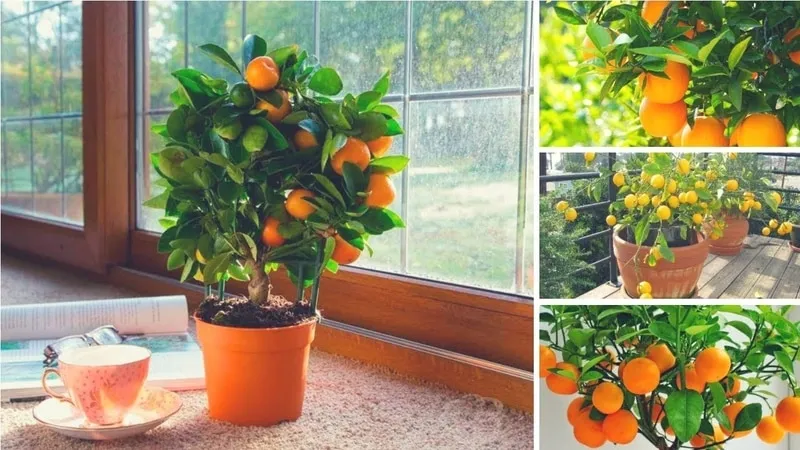
Citrus plants are native to tropical and subtropical regions and need high humidity. To maintain ideal conditions, mist the tree daily with warm water in spring, summer, and autumn. In winter, if the tangerine is kept in a cool room, misting is unnecessary.
If the tree is in a heated room, continue misting and place a humidifier nearby. If the plant is near a radiator, hang a damp cloth over the heater to protect it from dry, hot air.
Improper Winter Rest
Citrus plants need a dormant period in winter. Lower the temperature to +8…+10°C at least once every three years. Without this rest, the tree weakens, dries out, and sheds leaves.
Care Mistakes
Excessive leaf drop is often caused by incorrect care. Below are the most common mistakes.
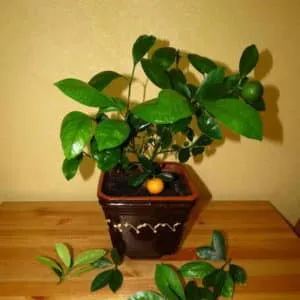
Overwatering
Overwatering leads to waterlogged soil, promoting fungal and bacterial growth, root rot, and nutrient depletion—all of which cause leaf drop.
To avoid this, water the tangerine only when the topsoil dries out. In winter, reduce watering to 2-3 times a week.
Underwatering
Infrequent watering also harms citrus plants. Dry soil encourages certain fungi and pests and prevents nutrient absorption.
Lack of Repotting
Repot the tangerine when roots fill the pot. Without repotting, the plant becomes root-bound, stunting growth and causing root die-off. Over time, soil nutrients deplete, and salt buildup occurs—fertilisers can’t fix this; a full soil replacement is needed.
Incorrect Repotting
Handle roots carefully during repotting. Severe root damage causes leaves to dry and fall. The same happens if the new pot is too small.
Nutrient Deficiencies
Tangerines often bear flowers, green fruit, and ripe fruit simultaneously, depleting their resources. To prevent leaf drop, fertilise every 1-2 weeks.
Acidic Soil
Citrus plants need slightly acidic or alkaline soil. Acidic soil causes foliage and branch problems.
Cold Watering
Use room-temperature water for irrigation. Cold water damages roots and promotes rot.
Diseases
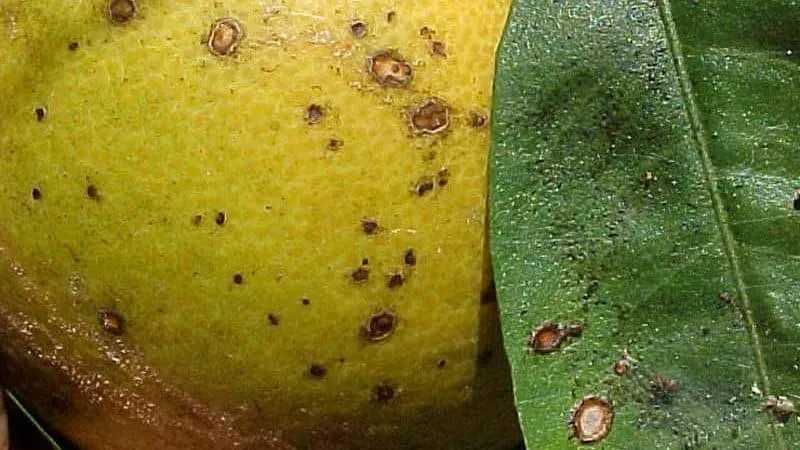
Many diseases eventually cause leaf drop, leading to the tree’s decline. Common tangerine diseases with this symptom include:
- Chlorosis. Caused by iron deficiency, often due to chlorinated water or fertilisers. Treat with iron chelate.
- Mal secco. A fatal disease where leaves drop from the top. No cure—discard the plant.
- Gummosis. Leads to thinning foliage, bark cracks, and gum oozing. Remove affected bark, treat with pruning wax, and apply copper fungicide.
- Root rot. Affects roots, visible only in late stages when leaves yellow and drop. Dig up the tree, rinse roots, cut off rotted parts, disinfect with copper fungicide, and repot in sterile soil. Water with a root stimulator and provide greenhouse conditions.
Pests
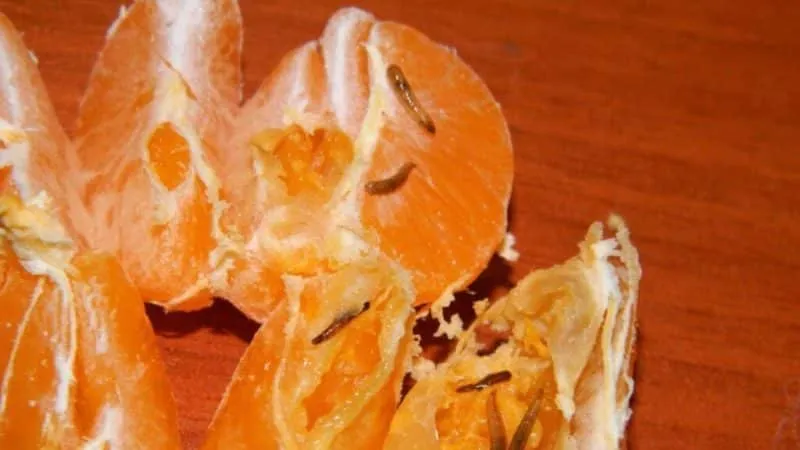
Pests are as dangerous as diseases. Sap-sucking insects are the biggest threat, causing severe leaf drop. Common culprits:
- Scale insects. Yellow or brown bumps on stems and leaf undersides. Remove manually with soapy water or wipe with rubbing alcohol.
- Spider mites. Fine webbing and tiny red bugs on leaves. Wash the plant and spray with insecticidal soap every 5 days (repeat 3 times).
- Aphids. Green or black clusters on new growth. Treat like spider mites.
- Thrips. Tiny black or translucent insects. Control methods same as for aphids.
How to Save a Tangerine Tree
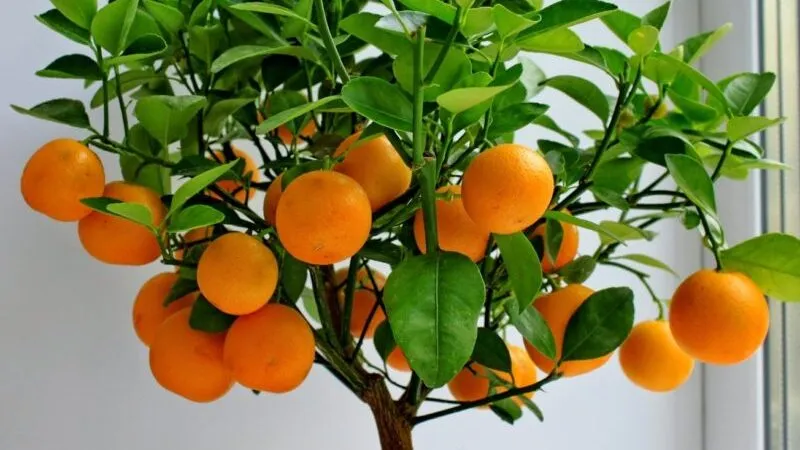
If overwatering is the issue, stop watering temporarily. Once the soil dries, repot the tree in fresh, sterilised soil. Water via the saucer initially.
For severely dry soil, reintroduce water gradually—small amounts every 2 hours. Resume normal watering after two days.
Adjust room temperature and light. Move the plant to a south-facing window. Correct other care mistakes.
Revival steps after identifying the cause:
- Cover the tree with a plastic bag (secured at the pot) to create a greenhouse effect. Ventilate daily for 15-30 minutes.
- Move it away from direct sunlight. Use a grow light for 12+ hours daily.
- Spray daily with a solution of Epin. Add Rooting Hormone to water weekly.
Maintain these conditions until new leaves appear. Then reduce stimulants and gradually remove the greenhouse.
To boost foliage growth, apply nitrogen-rich fertiliser (ammonium nitrate). Add superphosphate and potassium salts.
Once new leaves mature, water with a micronutrient solution or balanced fertiliser.
Other Problems and Solutions
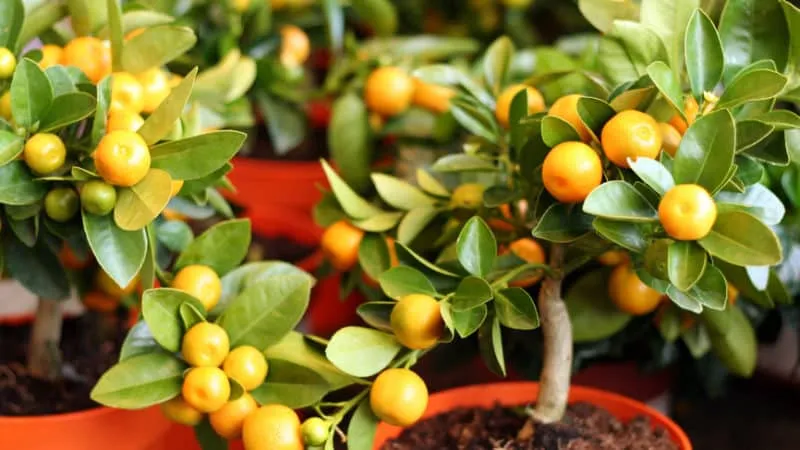
Under stress or poor care, tangerine leaves may not drop but deteriorate. Their appearance indicates the issue.
Leaves Drying Out
Yellowing, curling, and drying leaves suggest underwatering or insufficient light. Adjust watering and lighting.
Tip: In summer, move the tangerine outdoors or to a balcony.
Dry Tips or Yellowing
Dry leaf tips indicate overwatering. Let the soil dry halfway, then repot or water with a weak potassium permanganate solution.
Low humidity also causes this. Increase misting and use a humidifier.
Yellow, spotted leaves signal pests or diseases (see treatments above).
Complete Leaf Loss
Total leaf drop indicates severe neglect. Possible causes include extreme drought followed by overwatering.
Warning: A tangerine may suddenly shed all leaves if subjected to drastic soil moisture changes.
Steps to recover a leafless tangerine:
- Create a greenhouse by covering the tree with a bag (ventilate daily for 15-20 minutes).
- Spray the trunk and branches daily with warm Epin solution.
- Stop watering—place wet florist foam, clay pebbles, or water-soaked cotton in the tray.
Maintain this until new shoots or leaves emerge. Then water with Rooting Hormone and increase ventilation.
Once regrowth occurs, prune dead branches and seal cuts with pruning paste.
Preventive Measures

Prevention is better than cure—follow these tips:
- Water frequently with small amounts of warm water.
- Mist the foliage regularly.
- Fertilise every 2 weeks, alternating mineral and organic options.
- Maintain optimal temperature and light.
- Rinse the plant weekly under a shower.
- Inspect for pests.
- Acclimate the tree gradually to new environments.
- Repot annually for the first 3 years, then every 2-3 years.
Conclusion
Tangerines are evergreen plants. With proper care, they develop a lush, symmetrical crown, producing flowers and fruit yearly.
A healthy tangerine shouldn’t lose leaves excessively. Slight leaf drop is normal, but rapid thinning signals cultivation errors needing immediate attention.







